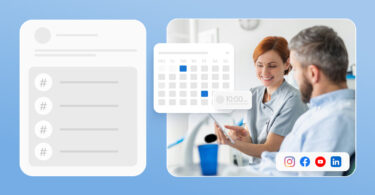The popularity of social media platforms as a commercial medium is on an upward trend. Most major platforms have developed a way to offer social media users the ability to buy their favorite products without going to an external site. Facebook Shops helps businesses to interact with their target audience and convert them faster.
The Shop feature from Meta for Facebook and Instagram has seen a considerable welcome from most businesses due to its effectiveness in social shopping strategies. It is becoming one of the must-haves for retail businesses.
This blog explores how to leverage Facebook Shops to boost revenue faster.
Table of contents
- What are Facebook Shops?
- Why do you need a Facebook Shop?
- Facebook Shop vs. Facebook Marketplace
- Facebook Shops vs. other e-commerce platforms
- What do you need to set up Facebook Shops?
- How to set up Facebook Shops?
- How do you tag products on Facebook Shops?
- Facebook Shop examples for inspiration
- FAQs about Facebook Shops
- Boost social media presence with Birdeye
What are Facebook Shops?
A Facebook Shop is an online store built on the Facebook platform to help businesses offer an easy checkout experience to social media users and grow their business.
Businesses can connect their products via the Shop feature to their Facebook and Instagram accounts to improve exposure across these platforms. The presence of Facebook Shop also drastically impacts the success of your targeted advertising programs.
Why do you need a Facebook Shop?
Social media platforms like Facebook and Instagram are turning into discovery channels for customers looking to shop from local businesses. In such scenarios, Facebook Shops offer cost-effective and efficient channels for businesses to promote their products and boost sales.
However, beyond the apparent revenue implications, Facebook Shops also offers a wide variety of benefits to businesses, such as
Improved brand awareness
Social media users use Facebook to browse products, discover brands, and contemplate their options in the purchase journey. Facebook Shops allow customers to peruse your offerings without leaving the platform. The platform also promotes businesses posting products on Facebook to keep the users from leaving to an external site.
This preference by the platform makes sure that more users see your business, boosting brand awareness.
Higher revenue opportunities:
Americans spend more than $1 trillion online annually. A considerable percentage of it goes to social media commerce activities. As one of the largest social media platforms, Facebook is a good place to start your social commerce projects.
You create the potential to take a larger piece of that trillion-dollar pie when you set up a Facebook Shop.
Integrated experience
When you have a Facebook Shop, you help customers turn that browsing experience into a shopping experience. They can access support, look at product collections, and read content from the business, all from the same place.
Facebook Shops also has easy checkout and payment options, considerably improving user experience.
Advertising
When you run targeted ads on Facebook, you can reach a wide audience range. When you have a Facebook Shop linked to your account, you can connect your product ads and significantly improve conversion rates.
You can also specifically target users who wishlist your products for better results.
Facebook Shop vs. Facebook Marketplace
For social media users looking to purchase products, Facebook Marketplace has always been a great platform. Local businesses, resellers, and agents can list their products, engage with customers, and generate revenue.
Facebook Shops significantly differ from the Facebook Marketplace model, and here is a quick comparison for your reference:
| Facebook Shops | Facebook Marketplace | |
| Access | You can set up products on your Facebook page shop. You can also sell on Instagram directly. | You must use your personal Facebook account to sell a product on Facebook Marketplace. |
| Payment options | Shops support an array of payment options – PayPal, Facebook Pay, and debit or credit cards. | Buyers and sellers alike must arrange how the payment will be made, whether in-person, via PayPal, eTransfer, or otherwise. |
| Custom branding | You can customize your shop with your brand and design (though options are somewhat limited). | The Marketplace does not have a customizable storefront. |
| Inventory management | You can manage your inventory using the Commerce Manager. | There are no inventory management options. |
| Integrations | Facebook Shops can be integrated with WooCommerce and Shopify. | Facebook Marketplace has no product integration options. |
| Visibility | Products can be discovered by those who follow your page or those who see your products in advertising. | The product you list is only visible in the Marketplace. |
Facebook Shops vs. other e-commerce platforms
Social commerce is a relatively new phenomenon that is not widely available in all parts of the world. Retail businesses tend to gravitate towards e-commerce platforms that allow them to cater to a broader audience worldwide.
But Facebook Shops can be a good place to start, build a community, and grow your business. Here is a comparison of how Facebook Shop fares against traditional e-commerce platforms.
| Facebook Shops | Other e-commerce platforms | |
| Cost | They are free to set up without any additional cost requirements. | They offer a free trial followed by a monthly subscription fee, ranging from about $3.99 to $399 per month, depending on the solution and plan. |
| Transaction fees | 5% transaction charges apply for orders using the in-app checkout option with a $0.40 selling fee for a purchase of $8 or less | You will typically need to cover credit card fees in addition to your monthly subscription. |
| Customer Base | Instant access to a broader audience with the Facebook organic content algorithm and targeted advertising methods | Typically requires you to drive your traffic with SEO and other marketing methods. |
| Cataloging | Straightforward cataloging – adding details and arranging products is easy. You can also group products into collections. | Product cataloging can often be time-consuming and sometimes frustrating on e-commerce platforms. |
| Customer Support | Helps offer customer support via Messenger. | Allows the option of adding Live chat or chatbots. |
| Advertising | Built-in advertising features with Facebook ads using your business manager account. | May have built-in sharing features for social media. |
What do you need to set up Facebook Shops?
First, let’s cover the basics:
- If you don’t already have a Facebook account, you must create one.
- You must have a Facebook business page and catalog set up.
- You must ensure you have complete control of the account and have Manage permissions for the page and catalog.
- If you want to make your shop available on Instagram, you must have an Instagram business account connected to your Facebook business page.
Note: If you want to create an Instagram shop, you do not require a Facebook business page.
To set up a Facebook store, you must also meet the following requirements:
- Your Facebook page must have at least 2,000 likes.
- Digital items are not allowed. You can list physical items in Facebook Shops.
- You must have a legal permit to operate as a business in your region.
- You must have a valid Tax Identification Number (TIN) and a valid bank account with a name that matches your Facebook account.
How to set up Facebook Shops?
Facebook Shops are only available in a few parts worldwide. If the feature is available in your region. In that case, you can connect your Facebook business account to your Shop with the process below:
Facebook commerce manager method
Businesses could set up Shop directly from their Facebook page by listing products. However, as per the new process, you would have to go to the Commerce manager tab to set up Shop.
Visit commerce manager onboarding
First, you will need to go to the Commerce Manager. Facebook has an onboarding process you must go through to set up products for the first time. Click the “Next” button when you’re ready to get started.
Choose your sales channels
Your first step is to select your sales channels. Facebook may select your Facebook page and connected Instagram account automatically, but if not, you will want to select the correct page and/or account now.
Create a catalog
Click on the “Change” link next to the “Products” header. From here, you can add a new catalog. Give the catalog a name and click on the “+” button when you’re ready for the next step.
Choose your checkout method
Click on the “Change” link next to the “Checkout method” header. Choose one of the following options:
- Check out on another website. Choose this option if you want your customers to be taken to your website from your product listings.
- Checkout with Facebook or Instagram. Choose this option if you want your customers to be able to checkout directly on the Facebook or Instagram checkout platform. This method is only available to U.S.-based businesses.
- Checkout with messaging. If you want your customers to be directed to Messenger or WhatsApp to send you a message, choose this option.
Create your shop
Having set up your page and account, catalog, and checkout method, you’re ready to set up your shop.
At this point, you must:
- Add countries or regions where you ship to.
- Add your business email.
- Add the website you want to connect with your shop (if applicable).
- Agree to Facebook’s Seller Agreement.
- Click “Finish setup” when you’re done.
- Wait for Facebook to complete. This may take up to 30 seconds, and Facebook does not recommend navigating away or closing the browser tab.
Add products to your catalog
Click on the “Add items” button to get started. You can add products using one of the following methods:
- Manual. You should add one item at a time if you have a small inventory.
- Data feed. This method allows you to use a spreadsheet to add items to your catalog automatically.
- Facebook Pixel. This method uses your Meta pixel to add products from your store automatically.
If you choose the Manual option, you must provide the following files and information:
- Images. Images must be at least 500 x 500 pixels, and smaller than 8 MB. Facebook recommends adding at least two images per product
- Title. Add the name of the product.
- Description. Add a product description.
- Website link. You must provide the link to your product page if you sell off-site items.
- Price. Choose your currency and enter the product price.
Since you only need to click the “+ New item” button to add additional products, creating more listings is quick and easy. You can add one, five, or ten items at a time.
Customize your shop
Customizing your shop is the last step you’ll want to take before publishing it. Facebook will walk you through the simple steps. You can customize your shop’s layout, create collections, showcase featured products, and so on for the social media platform.
Publish your shop
Finally, when all your products and shop layout have been set up to your liking, you’re ready to go live with your new Facebook Shop setup. Once set up, a shop tab will appear on your Facebook page.
How do you tag products on Facebook Shops?
Businesses can increase the reach of your products listed in your Facebook Shop by tagging them on your content. This way, customers can easily navigate to your Facebook Shop or product catalog from content, improving the impact of your social commerce efforts.
Tag products in Facebook posts before publishing
If you have a Facebook post promoting your product, brand, or related topic, you can tag your product so that customers can click and learn more about it.
To do this:
- Within the content editor, Click the Tag a Product icon.
- Add one product at a time.
- The products will appear under your post and link to your shop.
Tag products in a post or Facebook Live after publishing
- Click on the photo or recording of the Facebook Live video.
- Click on the Tag Products button and add relevant products.
- The products will now appear in your Feed.
Facebook Shop examples for inspiration
Your Facebook Shop will effectively carry your page’s branding. The Facebook page on which your shop resides needs to be visually appealing and captivating.
Facebook allows you to customize your storefront to impress your social media audience and boost brand awareness.
To help you understand the impact of Facebook Shop designs, here are a few examples for inspiration:
Sephora
Sephora demonstrates that highlighting specific collections is a great way to increase your average order size by encouraging your customers to purchase multiple products or even bundles.
The brand also uses branded cover images to promote their products and attract customers to their Shop.
Lululemon
Lululemon highlights its latest products, which include yoga pants with pockets. The brand has extensive collection ranges that can help consumers pick the products they need without having to browse through the whole product range.
Vans
Vans spotlights their playful and colorful Vans x Haribo collection. They demonstrate that showcasing your brand collaborations is another creative way to take advantage of your Facebook Shop.
FAQs about Facebook Shops
The great news is Facebook Shop is free to set up. You’ll have no registration or subscription fees. Transaction fees, however, may apply.
No, but you may need to pay the following transaction and selling fees:
5% transaction fee.
$0.40 selling fee.
$20 chargeback fee for chargebacks.
Not at all. You can set up a Facebook Shop without a Shopify eCommerce store. You can, however, combine your Shopify store with your Facebook Shop if you have one.
The approval process for Facebook Shop usually takes around 48 hours. You’ll receive a notification once your shop has been approved.
Yes, you can. Setting up a Facebook Shop lets you sell directly from Facebook and Instagram shopping. But you don’t have to. You can send customers to your website if you prefer.
Boost social media presence with Birdeye
Setting up your Facebook Shop can get your products in front of its 250 million monthly visitors. But it takes more than adding your products to a Facebook page to grow your business. You need a solid strategy to grow your page for it to help your Facebook commerce efforts.
Consistent presence, user engagement, and publishing is important to make a mark on social media. Use Birdeye Social to grow your presence across platforms with automated publishing, monitoring, engagement, and more features.

Originally published









